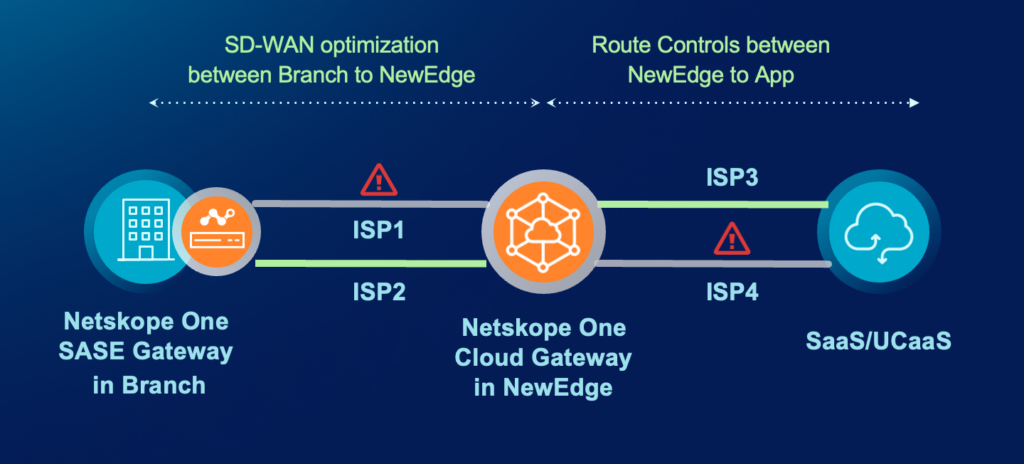
No matter what industry you’re in, solving for performance issues is always at the top of every networker’s mind.
Especially with applications like Microsoft Teams, or similar unified communications as a service (UCaaS) solutions from Zoom, Webex, RingCentral, Mitel, Vonage, or 8×8, that have become critical to day-to-day business operations. For a network operator responsible for a typical enterprise branch site, ensuring the network is highly-available and the performance for these apps measures up can often be the bane of their existence. It is commonplace when speaking with IT or network practitioners about their day-to-day challenges that user complaints for voice and video apps come up frequently.
Historically enterprises have attempted to address these problems by throwing more bandwidth at it. This approach has faced limited success considering the ever-growing volume of inbound Internet traffic (particularly streaming apps, like YouTube or Hulu) essentially competing with this higher-priority UCaaS traffic. Another approach has been to implement traffic prioritization and shaping techniques, which can often reduce the pain (largely based on where the throttling is implemented) but still not guarantee the desired performance in all scenarios. For example, applying quality-of-service (QoS) controls outbound is ineffective for modern streaming apps where the majority of traffic is inbound towards the branch and these apps can end up consuming a significant portion of the WAN link. Ultimately the root of the problem is often not insufficient bandwidth, but also issues like packet loss, jitter, and latency which can severely impact the app’s performance and ultimately the end user’s experience.
This is where Netskope can help solve these issues.
Modernizing branch connectivity with end-to-end SaaS and UCaaS optimization
Today Netskope is recognized as a cloud network security leader helping enterprises protect their most valuable digital assets, enforce compliance policies, and guard against threats. This is validated by the fact that Netskope was ranked as a Leader in both Gartner Magic Quadrants for Security Service Edge (SSE) and Single-Vendor Secure Access Service Edge (SASE) in 2024.
Netskope prides itself on being able to intercept and provide comprehensive inspection for all their network traffic to protect customers from security blindspots. While this is extremely appealing to CISOs and security practitioners, the other part of the Netskope story—one that resonates strongly with network, infrastructure and operations (NI&O) leaders—is what Netskope brings to bear on the performance and network optimization side for these apps. At the heart of this transformation lies the powerful combination of Netskope One Cloud Gateways seamlessly integrated within the Netskope NewEdge Network—the world’s largest and most connected private SASE cloud—delivering unmatched performance, resilience, as well as complete SSE and SD-WAN functionality and a pathway to full SASE adoption.
First-generation SD-WAN technologies are built for on-prem applications and typically fail to extend the benefits of SD-WAN to the cloud/SaaS applications. By adopting Netskope One Cloud Gateways inside the NewEdge Network—combined with diverse connectivity options (e.g. MPLS, DIA, 5G)—customers are able to embrace a cloud-first approach, leveraging redundant WAN links, deployed in an active-active mode, for sub-second failure if issues emerge. The Netskope solution also takes advantage of symmetrical optimization techniques like forward error correction (FEC) to further tune up the performance of voice and video. Plus, these same Cloud Gateways support inbound QoS (NewEdge to the Branch) to manage congestion, enhance network performance, and guard against bandwidth hogging streaming apps. Ultimately, the Netskope approach extends SD-WAN benefits to the cloud and critical cloud-delivered apps to prevent business disruptions.
However, this only addresses part of the problem, as there could still be upstream issues or multiple “hops” needed for this critical traffic to get to its destination, which could introduce their own set of network performance issues. This is where the unique Cloud On-ramp use-case from Netskope has the potential to unlock massive performance gains for customers. To enhance performance and deliver the best possible quality-of-experience (QoE), NewEdge leverages extensive peering and an aggressive interconnection strategy that today represents more than 4,000 network adjacencies to 700 unique ASNs—including direct connections with Microsoft and Google in every location possible, plus other top destinations such as AWS—combined with its position as one of the ‘Top 12’ most active global IX participants in the world. The level of control the vendor has over routing is equally important as peering. For example with NewEdge, Netskope retains complete end-to-end control and leverages innovations like route control to mitigate ISP connectivity issues in real time—even outside of Netskope’s direct control (e.g. backbone router failure, Internet weather event, or submarine cable cut)—when they do arise.

Enterprises that have chosen Netskope One SASE acknowledge this NewEdge performance kicker and often share positive feedback they have received directly from their users.
Take Orbia for example, “Following an RFP process, Orbia decided on Netskope One, a converged security and network-as-a-service SASE platform that combines Netskope’s Intelligent SSE with its Borderless SD-WAN offering. Gaining a global point of presence network —Netskope has POPs in 75+ regions—helped provide consistent access for users across different locations.“, said, Andrea Foppiani, Senior Manager for global IT infrastructure and cloud security at Orbia
NI&O leaders recognize the NewEdge Network as a key differentiator of the Netskope One platform. By combining Netskope One Cloud Gateways with NewEdge, organizations achieve end-to-end resilience and optimization for business-critical SaaS and UCaaS applications. Leveraging SD-WAN optimization from branch to NewEdge, along with extensive peering and route control to the application, Netskope ensures seamless performance. Delivered entirely as-a-service, the solution reduces costs, simplifies deployment, and resolves persistent performance challenges. This is why unified SASE gateways are increasingly being adopted by both existing and new customers to enhance network security, modernize branch connectivity, and optimize application performance.
To learn more please visit the Netskope NewEdge Network page. To learn about the SASE Gateways and the Netskope One SASE Branch, please visit the SASE Branch page.




 Back
Back
















 ブログを読む
ブログを読む